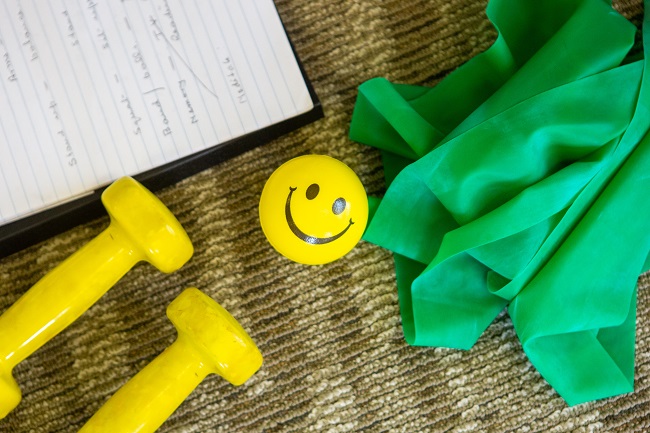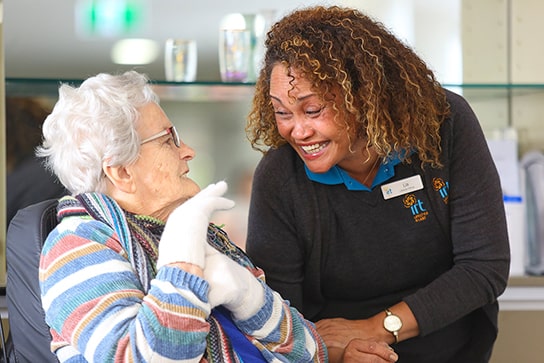7 ways to help prevent arthritis
Arthritis is one of the most common, costly and disabling chronic conditions in Australia. In this article, we look at the common causes of arthritis, symptoms and what you can do to help with arthritis prevention.

Arthritis is an umbrella term for more than 100 conditions that affect the joints and surrounding structures in our body. It’s one of the most common, costly and disabling chronic conditions in Australia and affects almost four million Australians, including 6000 children, according to Arthritis Australia.
The three most common types of arthritis are osteoarthritis, rheumatoid arthritis and psoriatic arthritis. Each type develops differently, but are all painful and can lead to a loss of function.
Arthritis symptoms
Arthritis symptoms vary from person to person, range from mild to severe and may come and go. If you develop arthritis, symptoms mostly always include: joint pain, swelling in a joint, redness and warmth in a joint, stiffness, and reduced range of motion.
Arthritis symptoms can stay the same for many years or they can progress and worsen over time. Severe pain caused by arthritis can make daily activities like walking and climbing the stairs difficult and grueling.
Did you know?
- The number of Australians with arthritis is projected to rise to 5.4 million by 2030.
- Arthritis is the second most common reason for early retirement due to ill health.
- Health system expenditure for arthritis is more than $5.6 billion annually, making it one of the most expensive disease groups in Australia.
- Around 2 million people with arthritis are of working age (15-64).
- Arthritis is the second most common cause of disability after back pain.
What causes arthritis?
It's not fully understood what causes the many types of arthritis. Most forms of joint disease are thought to be caused by a fault in the immune system that leads the body to attack its own joint tissue and this can be passed down genetically.
Other risk factors can include environmental influences such as obesity, repetitive joint movement, or previous joint damage. The risk of arthritis also increases for smokers and those who aren't regularly physically active.
Can arthritis be prevented?
So what can you do? Unfortunately, arthritis isn’t always preventable - some causes are out of your control. However, the good news is there are a few healthy habits you can practice to reduce your risk of developing arthritis, and improve your overall health at the same time.
Some of these may, at the very least, help with slowing osteoarthritis progression.
How to prevent arthritis - everyday routines that help
1. Eat well
A well-balanced diet is important for your overall health. Simple sugars and treats may give you a quick lift, but it’s whole grains and unsaturated fats that supply the reserves your body needs to draw on throughout the day.
The National Health and Medical Research Council’s Australian Dietary Guidelines recommends choosing a variety of foods from each of the following five food groups every day:
- Vegetables and legumes/beans
- Fruit
- Grain (cereal) foods, mostly wholegrain and/or high cereal fibre varieties
- Lean meats and poultry, fish, eggs, tofu, nuts and seeds
- Milk, cheese and yoghurts and/or alternatives
Eating well can help you maintain a healthy weight and reduce the pressure put on your joints.
2. Exercise regularly
Extra body weight increases the stress on your joints, particularly the knees, hips and lower back. In fact, research has found that up to 70% of cases of osteoarthritis of the knee is preventable by avoiding excess weight gain and maintaining a moderate weight.
If you are overweight, losing weight and exercising regularly will decrease the stress on your joints, may reduce pain and will make it easier for you to move around.
Before you start to exercise, it’s important to ask your doctor or health care professional to help you develop a suitable program of activities for your individual needs.
Arthritis Australia generally recommends a combination of the following when it comes to exercise:
Flexibility
Exercises such as yoga and muscle stretches will help maintain or improve the mobility of your joints and muscles.
Muscle strengthening
Using weights, resistance bands and gym machines will help strengthen your muscles to support and take pressure off sore joints, strengthen bones and improve your overall balance.
Fitness
Exercises like a brisk walk will help improve the health of your heart and lungs and focus on the larger muscles in the body, rather than exercising a specific area.
Low-impact exercises are another option as they put less pressure on the joints. These can include; exercising in water such as swimming or water aerobics, tai chi, Pilates, cycling and dancing.
According to the Australian Institute of Health and Welfare’s guidelines, adults aged 65 years and over should do at least 30 minutes of moderate physical activity each day. If you have not exercised for a while, you may need to start with shorter sessions then build slowly.
3. Stay hydrated
Did you know the cartilage in our joints is made up mostly of water? When we’re dehydrated, there is less moisture in our cartilage which makes it more susceptible to damage by wear and tear. The average person should drink between two to two-and-a-half litres of water per day. So, upping your water intake now will not only help keep your joints lubricated so you can move better, it will also reduce your risk of developing arthritis in years to come.

4. Don't smoke
If you need another reason to quit smoking – in addition to things like a heightened risk of developing lung cancer and emphysema – then here it is: smoking is another risk factor for arthritis too – particularly rheumatoid arthritis. Studies have shown that smoking can increase the stress put on the immune system which leads to impaired antibacterial defences, inflammation and connective tissue damage. Quitting smoking will improve your overall health and wellbeing, with the added benefit of helping to prevent the onset of arthritis. If you’ve tried to quit smoking on your own and can’t, you could try talking to your doctor to see what other options are available to help you quit.
5. Protect your joints
When you injure or strain your joints, you can damage the cartilage and cause it to wear more quickly. Using the right techniques for everyday movements such as sitting, working and lifting can help protect your joints from strains. Some examples include carrying items close to your body so you don’t put too much strain on your wrists, and lifting objects using your knees and hips, rather than your back.
It’s also important to look after your joints while playing sport and exercising. To avoid injury, always use the proper safety equipment and make sure you’re exercising using the correct movements and techniques.
6. Get in the habit of stretching
Stretching every day is a great way to lubricate your joints and enhance and maintain your range of motion. You should try and spend at least 10 minutes stretching each day, working each major muscle group. If you find stretching in its basic form is a little bland – try mixing it up. Yoga, for example, is a great form of exercise that combines stretching, strength training and range-of-motion movements all in one.
7. Avoid repetitive movements
Jobs that involve a lot of repetitive motion can be hard on your joints and increase your risk of developing arthritis. If your job involves a lot of squatting, kneeling, lifting, twisting and walking, try to give your body and joints a rest by taking small breaks in between tasks and, where possible, incorporate stretches and mild exercises into these free periods. An essential part of reducing repetitive movement is giving your body a change of pace, so try to vary your movements throughout the day.
Arthritis pain: Do's and don'ts
Living with chronic pain can be one of the hardest parts of having arthritis. Inflammation, heat and swelling in your joints, muscle tension from trying to protect your painful joints and joint damage from injury are all sources of arthritis pain.
To manage arthritis pain it's important to understand what works and what doesn't work for you. Don't let your arthritis pain control your life. Experiment with different management techniques to find what works best for you.
Do's
- Keep your joints moving with daily low-impact exercise.
- Consider an anti-inflammatory diet (some people find this can help).
- Manage your weight.
- Explore pain relief techniques to find what works for you, whether it be heat and cold therapy, acupuncture, massage, mindfulness exercises, deep breathwork or meditation.
Don'ts
- Don't participate in high impact activities like running, jumping, tennis or high-impact aerobic exercise.
- Don't over or under-treat your pain with medication without talking with your doctor or pharmacist. They can help you understand which medicines are right for you and how to use them most effectively to relieve pain.
- Don't smoke! It causes stress on your connective tissues and can increase arthritis pain.

Healthy living, your way!
At IRT, we’ve been helping older Australians live their best lives for more than 50 years. We offer retirement living, residential aged care and home care services in various locations across NSW, ACT and Qld. We believe it's our values as a community-owned provider that help us to be the best at what we do.
Find out moreSubscribe to our newsletter
You may also like
Choosing an Aged Care Centre: What to consider
Moving from your home into a residential aged care centre can be a rewarding experience for you or your loved one.
Your guide to moving into a retirement village
When the decision to move into a retirement village has been made, the thought of packing up your old home and moving in to your…


